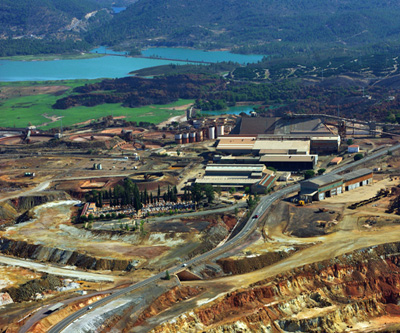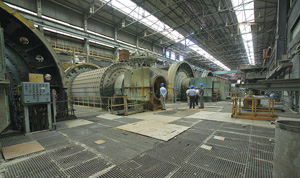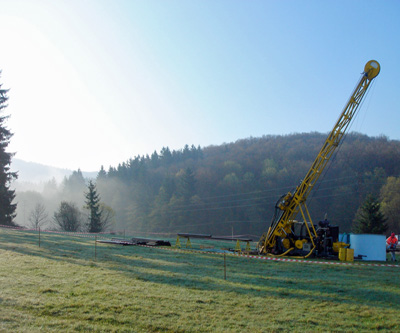
If there is one mining project anywhere in the world that could warrant the old Hollywood blockbuster title of Back to the Future it must be EMED Mining’s Rio Tinto copper venture in Andalucía.
Mining in this region of southern Spain dates back as far as 5,000 years – according to myth it is the site of the Biblical King Solomon’s mines.
Rio Tinto’s modern history dates back 1871 when the Spanish government sold the mines to a British firm which would eventually morph into what is today the world’s third largest miner Rio Tinto plc.
Rio Tinto disposed of the mines in the 1980s and it was mothballed in 2001 following a disastrous period under a workers’ collective.
As for the future – EMED hopes to restart operations at the mine end of next year.
But it’s not the re-emergence of mining on the Iberian peninsula nor the comeback of an iconic mining complex that makes EMED’s Rio Tinto copper project so significant.
What really points to a momentous shift in the copper industry is an unconventional deal the London and Toronto-listed firm inked with investment bankers Goldman Sachs.
Harry Anagnostaras-Adams, founder and MD of EMED, cut his teeth in corporate finance and in March negotiated an agreement with Goldman whereby EMED gets $175 million up front with no equity dilution.
In exchange for the cash the investment bank gets the equivalent in copper delivered every month for the next seven years.
Without producing a single tonne EMED signs up a solid customer without even having to hedge the price.
“They want the metal, not the cash,” says Anagnostaras-Adams.
Sweet deal.
Why would Goldman shake hands on such an arrangement?
This is where it gets interesting.
Goldman, along with just about all its competitors and traders like Glencore, are getting ready to launch exchange traded funds backed by physical copper in the US. Deutsche Bank already has a copper ETF running in Europe.
Not only could ETFs provide a new source of funding for developers like EMED, it could change the global copper trade – and its price – in a massive way just as gold and silver ETFs impacted precious metals.
 As one investment banker put it to the Financial Times: ““Fundamentally copper is tight anyway. Add an ETF to that and it becomes explosive.”
As one investment banker put it to the Financial Times: ““Fundamentally copper is tight anyway. Add an ETF to that and it becomes explosive.”
Supply is tight and getting tighter.
This week Goldman Sachs came out with a report showing Chinese copper usage is at the second highest run rate on record while world number one producer Codelco said its output fell 10% in the first quarter.
Apart from Goldman, China’s Xiangguang Copper injected $30 million into EMED in exchange for product – this time they had to give up some shares too – which means 40% of copper reserves have already been sold.
What counts most in EMED’s favour is that it can flip the switch on an existing 9 mtpa facility after spending $200 million on an upgrade.

“Building it from scratch today would cost at least $1 billion,” says Anagnostaras-Adams.
EMED’s wholly-owned project would never have happened seven years ago when Anagnostaras-Adams first arrived in Europe from his native Australia: “The first thing that struck me on site was the deafening silence.”
Says Anagnostaras-Adams: “The crisis in Europe is the best thing that could have happened to the mining industry and that means our gamble on Europe is starting to look correct. The community is hungry for jobs and regulators are now on our side.”
Permitting for the open pit operation is expected to conclude at the end of this year.
An example of just how strongly the Andalucía authorities have come to back mining projects – shaping up for expropriation if EMED is unable to come to commercial settlement over access to waste deposition areas with a group that is holding out for vast sums of money.
EMED has already spent $50 million on the Rio Tinto mine and 100 people are on site at the moment. At full blast the mine would employ 1,200 people.
EMED’s other projects include early exploration in Cyprus where Anagnostaras-Adams has based the parent company and the Detva gold project in Slovakia which is entering advance permitting.
Cyprus (kuprios) where mining dates back to the Bronze Age is the ancient Greek word for copper and the region where Detva is located supplied much of the wealth of the Hapsburg empire which ruled vast swathes of Europe for hundreds of years.
Back to the future indeed.
3 Comments
Allan Antipuesto
please help me on my application coz I’m very much willing to work in this company
Shaftman3
Well Well Big gears .How many tons a day
Allan Antipuesto
how can i apply in this company